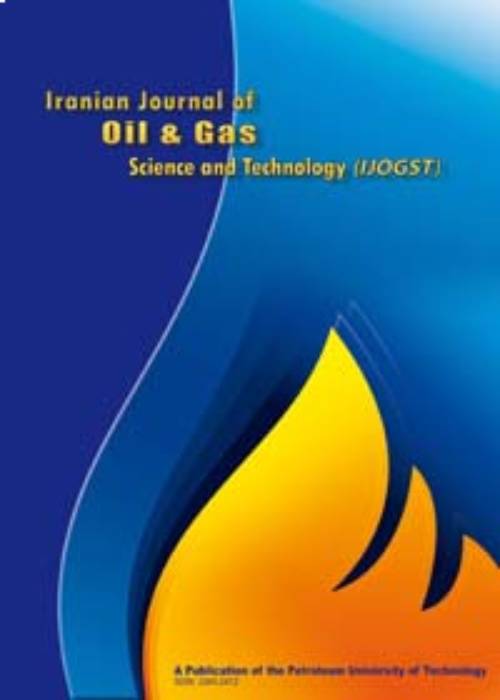فهرست مطالب

Iranian Journal of Oil & Gas Science and Technology
Volume:12 Issue: 1, Winter 2023
- تاریخ انتشار: 1402/09/09
- تعداد عناوین: 2
-
-
Kernel Principal Component Analysis (KPCA) in Electrical Facies ClassificationPage 1
In this study, in order to facies classification, the kernel principal component analysis (KPCA) feature extraction method is used to extract new features from the measured well-logs. After applying the Principal Component Analysis (PCA), and KPCA feature extraction approaches, the classification was made using three powerful classifiers: Multilayer Perceptron Neural Network (MLP), Support Vector Machine (SVM), and Random Forest (RF). Finally, the predicted results for the test data that were not included in the training process were evaluated with the F1 score criterion.The PCA method did not show a significant effect on the classification performance due to the nonlinear structure of the facies. Our results show that the KPCA improves the performance of facies classification. Compared with the conventional approach based on well-log data, our new approach improves the classification accuracy for each classifier algorithm. In the RF results, the classification accuracy has increased by about 6% while using the KPCA feature extraction approach, increasing from 52% to 58% compared to the original well-log data.
Keywords: Electro-Facies, Kernel Principal Component Analysis, SVM, Random forest, Wire-line logs -
Economic, Strategic and Environmental Analysis of Gas Injection Compared to Its Export, A Case Study of Fields in the Iranian Southern Oil ReservoirsPage 2
In this study, by using a relatively complex reservoir model and reservoir simulator, the gas injection process was investigated from two technical and economic perspectives. This reservoir model has 4 production wells and 3 gas injection wells, which are in operational conditions for a period of 15 and 10 years. Since gas injection with higher pressures in the reservoir requires more gas supply to stabilize the pressure, from a technical point of view, the effect of different injection pressures on the improvement of the final recovery factor and cumulative oil production was investigated. The findings show that all gas injection scenarios due to the increase in the oil recovery factor (injection with well bottom pressure in the scenarios of 3750, 4000, 4250, and 4500 psi led to an improvement of 10, 12, 13.7 and 15% respectively) compared to natural depletion (no gas injection in the reservoir) is desirable. From an economic point of view, after sensitivity analysis of the parameters related to production and injection (such as the price of produced oil, the price of produced gas, the cost of injected gas, and the discount rate), the results show that the increase in the price of oil and produced gas increases the economic added value of gas injection projects. Considering various parameters for the price of export gas as well as gas export costs (capital and operational), comparing the added value of gas injection projects with gas export showed that the higher the price of export gas, the more favorable gas export projects are compared to gas injection. Also, as the cost of gas export increases, the desirability of gas export decreases compared to gas injection in the reservoir.
Keywords: Gas Injection Simulation, Recovery Factor, Economic Evaluation, Export

